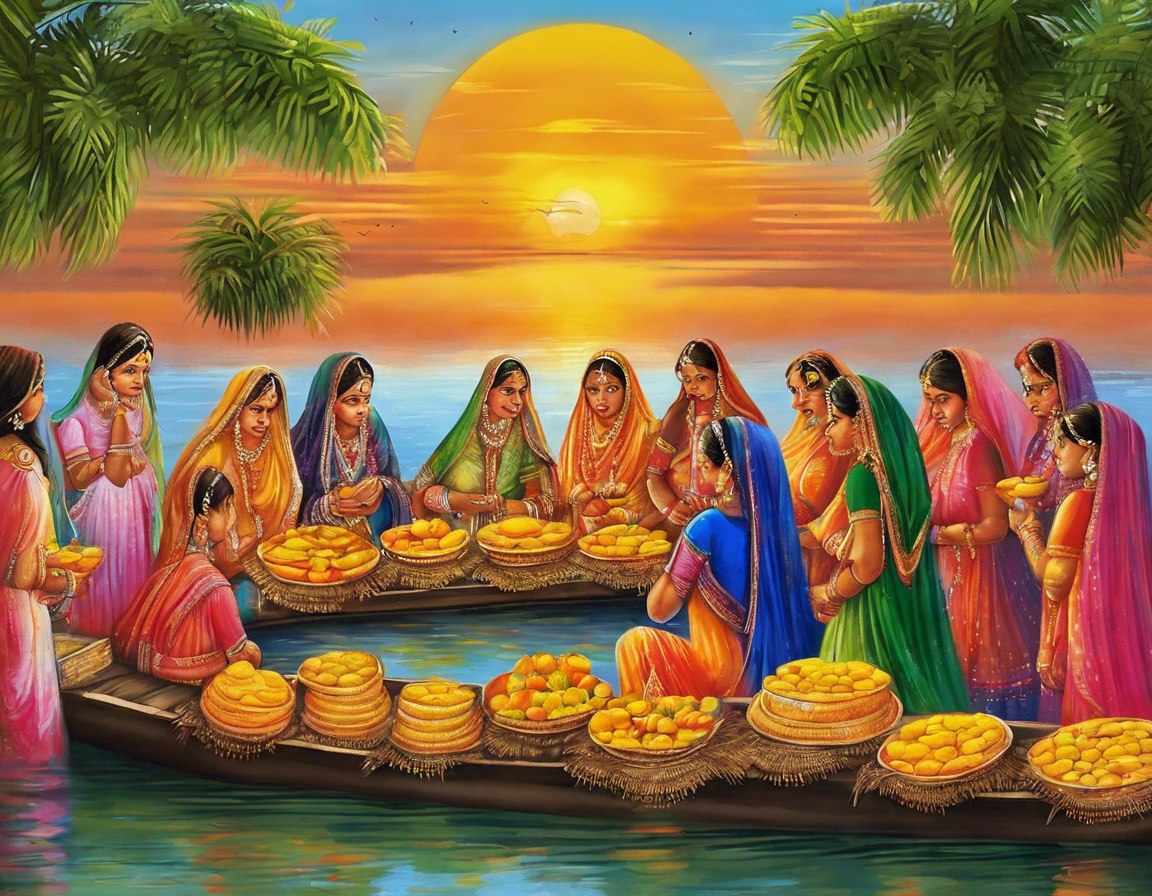

Celebrating Chhath Puja Dates and Traditions
Introduction
Chhath Puja is a significant festival celebrated mainly in the northern parts of India, particularly in the states of Bihar, Jharkhand, Uttar Pradesh, and some parts of Nepal. It is dedicated to worshipping the Sun God, Lord Surya, and his consort Usha. Chhath Puja typically falls six days after Diwali, and it is celebrated with great fervor and enthusiasm by millions of devotees. This article will delve into the dates, traditions, significance, and rituals of Chhath Puja, offering a comprehensive guide to this auspicious festival.
Dates of Chhath Puja
Chhath Puja is celebrated over four days, each day holding its own significance and rituals. The dates of Chhath Puja vary each year according to the Hindu lunar calendar, usually falling in the months of October or November. The main days of Chhath Puja are as follows:
Day 1: Nahay Khay – Chaturthi
The first day is known as Nahay Khay, which means ‘bath and eat’. Devotees take a holy dip in the river before sunrise and bring the holy water home to prepare prasad (offerings) for the Sun God.
Day 2: Kharna – Panchami
On the second day, devotees observe a day-long fast without water, known as Kharna. The fast is broken in the evening after performing the rituals and offering sochal (prasad) to the deities.
Day 3: Sandhya Arghya – Shashthi
The third day is the main day of Chhath Puja when devotees offer Arghya (offerings) to the setting Sun. They observe a rigorous fast without water throughout the day and break it after offering Arghya to the Sun God in the evening.
Day 4: Usha Arghya – Saptami
The final day of Chhath Puja is known as Usha Arghya, where devotees offer Arghya to the rising Sun. It marks the culmination of the festival, and after offering prayers, devotees break their fast, concluding the rituals of Chhath Puja.
Traditions and Rituals
Chhath Puja is characterized by various traditions and rituals that hold immense significance for the devotees. Some of the key rituals observed during Chhath Puja include:
Construction of the Chhath Ghat: Prior to the festival, devotees clean and decorate the bathing ghats along the riverbanks where the rituals of Chhath Puja will take place. These ghats are usually made of bamboo, sugarcane sticks, and other natural materials.
Offering Prasad: Devotees prepare traditional offerings known as prasad, including thekua (a sweet dish made of wheat flour, jaggery, and ghee), fruits, and sugarcane, which are offered to the Sun God during the puja.
Vratis (Devotees) Observing Fasts: One of the most prominent aspects of Chhath Puja is the rigorous fast observed by devotees. They abstain from food and water for an extended period, displaying their devotion and dedication to the Sun God.
Chhath Puja Songs and Chants: Devotees sing traditional Chhath Puja songs and chants, known as Chhath Geet, while performing the rituals. These songs are melodious and are believed to invoke blessings from the Sun God.
Offering Arghya to the Sun: The highlight of Chhath Puja is the offering of Arghya to the Sun God during sunrise and sunset. Devotees stand in water and offer water, milk, flowers, and diyas to the Sun, thanking him for sustaining life on earth.
Significance of Chhath Puja
Chhath Puja holds immense significance in Hindu mythology and tradition. It is believed to be a way of expressing gratitude to the Sun God for sustaining life on earth and fulfilling wishes and desires. The festival is also associated with purity, self-restraint, and familial harmony, promoting unity and devotion among family members.
FAQs (Frequently Asked Questions)
1. What is the significance of offering Arghya during Chhath Puja?
– Offering Arghya to the Sun God is believed to purify the mind, body, and soul of the devotees. It is a way of expressing gratitude and seeking blessings for well-being and prosperity.
Chhath Puja is primarily celebrated in the northern regions of India, especially in Bihar, Jharkhand, and Uttar Pradesh. However, devotees from other regions and communities also participate in this auspicious festival.
What are the common food items prepared during Chhath Puja?
Some of the popular food items prepared during Chhath Puja include thekua, kheer (rice pudding), fruits, coconut, chana dal, and rice. These dishes are offered as prasad to the deities and shared among family members.
Is Chhath Puja only about worshipping the Sun God, or are other deities also worshipped during the festival?
While the Sun God is the primary deity worshipped during Chhath Puja, devotees also offer prayers to Chhathi Maiya (Goddess Usha), who is believed to be the consort of Lord Surya.
What is the significance of fasting during Chhath Puja?
In conclusion, Chhath Puja is a vibrant and spiritually enriching festival that celebrates the glory of the Sun God and upholds age-old traditions and rituals. The festival embodies the spirit of devotion, purity, and gratitude, fostering unity and harmony among families and communities. By understanding the significance and customs of Chhath Puja, one can truly appreciate the deep-rooted cultural heritage it represents.
key out your commercial enterprise is a all-important tone in establish your firebrand identity and…
As we search backwards on spirit, the transit of sentence often find like a blur.…
Debut Arouse news for button partisan as the discussion appointment for The Final of Us…
Great intelligence for all the lover of the iconic Joker movie! The highly-anticipated Turkey 2…
Attention all Highschool of the Dead rooter! The extremely anticipated dismissal clip for the raw…
The CBSE 12th Consequence 2024 equal one of the about awaited declaration for scholar, parent,…
This website uses cookies.